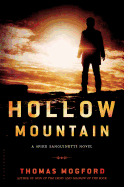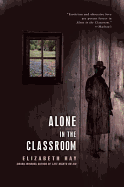 |
| photo: Jules Beresford |
Conn Iggulden has written poetry, short stories and novels for as long as he can remember. He taught English for seven years and was Head of English at St. Gregory's RC High School in London by the end of that period. He's the author of the Emperor novels, which chronicle the life of Julius Caesar, and is co-author of The Dangerous Book for Boys. Wars of the Roses: Stormbird (Putnam, July 8, 2014) is the start of a new series. He lives with his wife and four children in Hertfordshire, England.
On your nightstand now:
The Only Way to Stop Smoking Permanently by Allen Carr. It makes an argument for stopping--and about halfway through the book, you find yourself saying, "Huh," and just... stopping. No cravings, nothing. I made a point of finishing it, and I keep it like a talisman. In fiction, I'm reading The Iron Castle by Angus Donald: great medieval adventure, historical fiction based around the time of Robin Hood.
Favorite book when you were a child:
The Usborne Book of Spies. I lost it, so it became, in those pre-Internet days, unbearably precious, a symbol of my childhood, a treasure trove of knowledge I would never have: an irreplaceable book. Then the Internet came along, and I bought a copy on eBay. Apart from that, I loved The Secret Diary of Adrian Mole, Aged 13 3/4 by Sue Townsend. I read all the sequels, and I was ever so sorry to hear she had passed earlier this year. Hers are still among the funniest books I have ever read.
Your top five authors:
James Clavell for Tai-Pan and Shōgun; Jerome K. Jerome for Three Men in a Boat; David Gemmell for Waylander and the Drenai Tales; Raymond E. Feist for Pug (from the Riftwar Saga); and Wilbur Smith for the Courtney family.
Book you've faked reading:
Beyond using Cliffs or Brodie's Notes a couple of times in school, I don't, I really don't. I do put books down if they don't keep my interest. I expect people to do the same with mine--just give me 20 pages. Read them in the shop if you like. If it doesn't grab you, put it down!
 Book you're an evangelist for:
Book you're an evangelist for:
The Allen Carr book above. It works. If you want to stop smoking, get that book and smoke along as you read it. That's if you want to, you know. The worst that could possibly happen is that nothing will change.
Book you've bought for the cover:
The Complete Tales and Poems of Edgar Allan Poe--it was just a beautiful edition in black with silver lettering and red, debossed illustration and silver-edged paper. I am a sucker for fine editions. In fact, I went through a phase of having my old Bible, Hans Christian Andersen and Grimm Brothers books all rebound in calf leather to last another generation or six.
Book that changed your life:
In terms of my own, The Dangerous Book for Boys, as it won prizes and reached a lot of people. I hope it will continue to do so if the TV proposal with Bryan Cranston comes off. That would be a joy, as I loved him in Malcolm in the Middle and, of course, Breaking Bad.
In terms of books I've read, it must be Caesar by Christian Meier, a work of history written so vividly that scenes kept flashing into my head as I read it. That was my starting point for writing about the young Julius. Meier died before I could ever thank him, unfortunately.
Favorite line from a book:
I was intrigued to look through previous Book Brahmin examples. A line of poetry makes sense, for the sheer power and impact one line can have. For example, the haiku written by a Japanese mother in the 18th century [Chiyo-Jo] after the death of her son, just before she went into a monastery for the rest of her life: "Dragonfly catcher,/ Where today/ have you gone?" The joy and loss and exuberance in "Dragonfly catcher" makes me gulp every time I read it, father of four that I am. Yet, in prose novels, good characters are built to a more sustained peak of suspense and intimacy. Novels are tantric, compared to poetry. Individual lines might have terrific impact, but always in the context. They can't often be yanked out and laid bare without an awful lot of explanation.
Which character you most relate to:
The most intricate and layered character in Shakespeare is a hundred times simpler than the simplest living man. Human beings are extraordinarily complex, to the point where I sometimes think we are little more than an ant riding an elephant--and with no real sense of how to steer. In other words, while I might recognize individual traits in a character, not one will resemble me, not really. Or if they do, I won't know myself well enough to recognize it. A friend of mine said how much an awkward wedding speech in a recent BBC Sherlock episode reminded them of me. On the walls of the ancient oracle at Delphi was the phrase in Greek: "Know Thyself." Recognizing aspects of one's character in others requires a level of self-knowledge that I don't think I have.
Book you most want to read again for the first time:
After the last question, an easy one. Patrick O'Brian wrote 21 books [in the Aubrey Maturin series]--a few were made into a film, Master and Commander. I usually enjoy fast-paced books, but somehow these snuck under the radar and I was enjoying them before I realized they're all about the people and not a huge amount happens. They are treasures--gentle books full of nautical terms and delight in language and music and ships and the sea. They were a joy to me for a very long time. I cannot go back to being young, but I can read them all again and wish it was all for the first time.
How does it makes you feel that there are some people in the world who will never read one of your books? Good people, Conn--people who pet their dogs and water their plants and stare up at the stars and wonder every now and then, but somehow, they just won't ever pick one up:
It makes me sad. It's not right. It's just... not... right.
Book Brahmin: Conn Iggulden
 Other titles more directly introduce what a school day is like, such as Little Lola by Julie Saab, illustrated by David Gothard, in which the feline heroine is pleasantly surprised by what she discovers at school. Similarly, in Dog Days of School by Kelly DiPucchio, illustrated by Brian Biggs, a pooch ends up in class due to a wish by its boy owner; the dog does well enough, until the boy wishes to get back his old life. In Dinosaur vs. School, Bob Shea explains a few preschool guidelines--dinosaur-style. These three add comic touches through the creatures' perspectives.
Other titles more directly introduce what a school day is like, such as Little Lola by Julie Saab, illustrated by David Gothard, in which the feline heroine is pleasantly surprised by what she discovers at school. Similarly, in Dog Days of School by Kelly DiPucchio, illustrated by Brian Biggs, a pooch ends up in class due to a wish by its boy owner; the dog does well enough, until the boy wishes to get back his old life. In Dinosaur vs. School, Bob Shea explains a few preschool guidelines--dinosaur-style. These three add comic touches through the creatures' perspectives.



 Book you're an evangelist for:
Book you're an evangelist for: